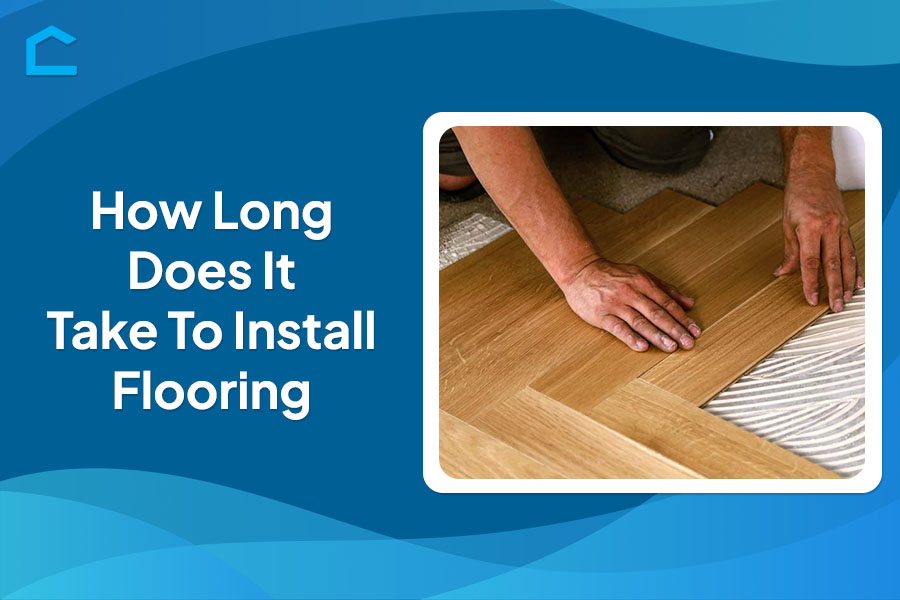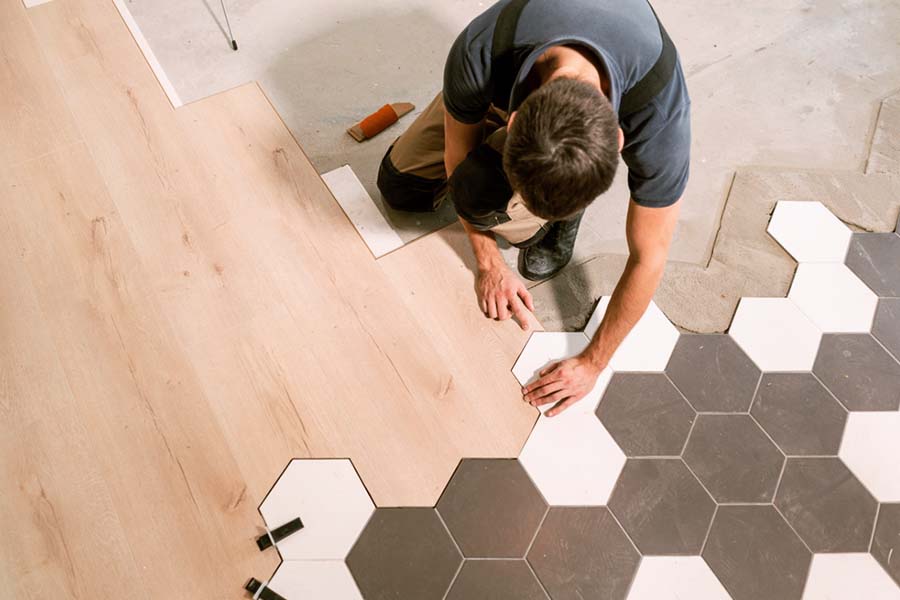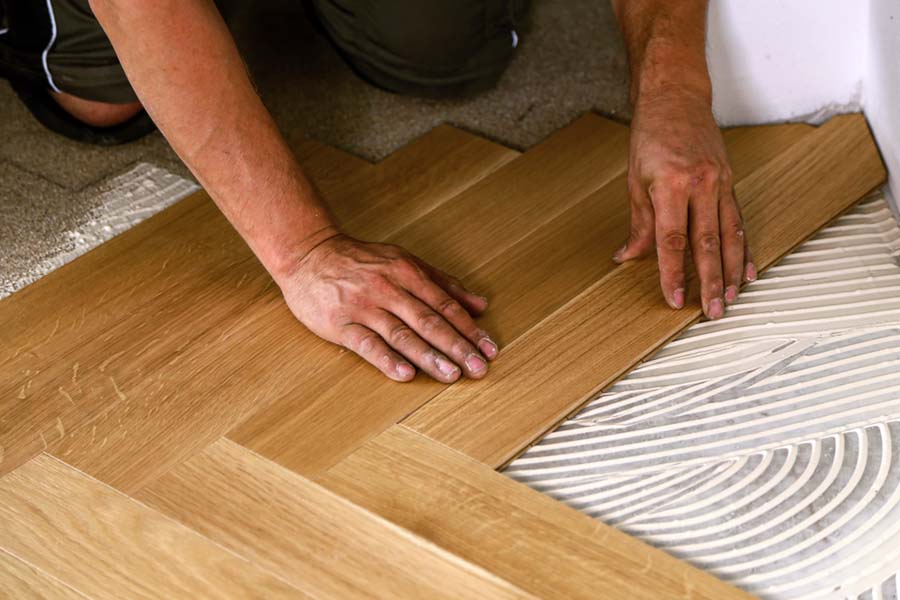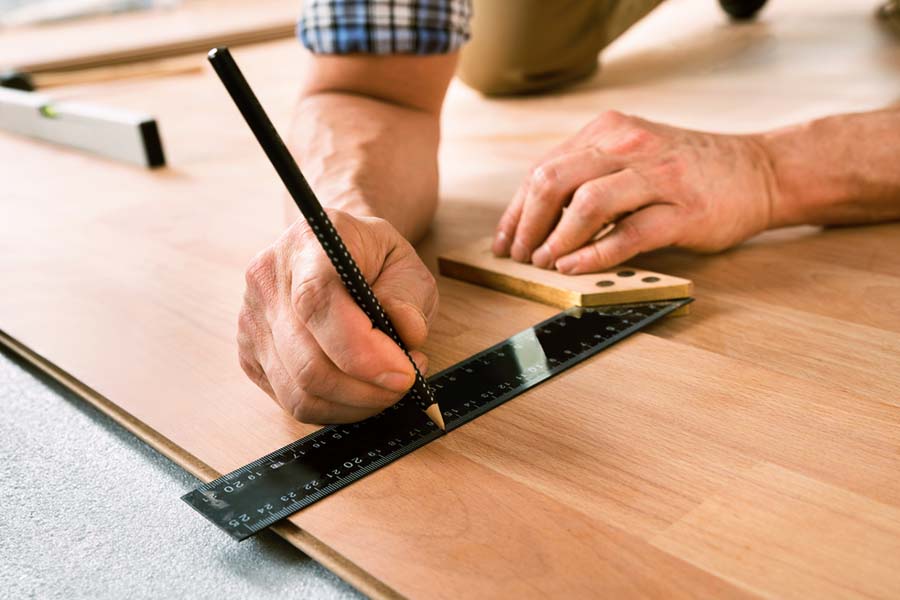How Long Does It Take To Install Flooring?

Are you considering a flooring renovation project for your home? Interested to know how long does it take to install flooring? The answer, however, is not as straightforward as you might think.
The duration of a flooring installation project depends on various factors. From the type of flooring material you choose to the size of the area being covered, each project presents its own unique challenges and requirements.
In this comprehensive guide, we will explore the key determinants that influence the timeline of a flooring installation project. We’ll dive into the intricacies of different flooring materials, including hardwood, laminate, tile, carpet, and vinyl. Their unique installation processes can significantly impact the overall duration.
We will also discuss the role played by factors like room layout, accessibility, and the presence of obstructions or intricate patterns. Whether you’re planning a simple room update or a whole-house renovation, understanding these variables will help you set realistic expectations and plan accordingly.

Source: shutterstock.com / Photo Contributor: Fusionstudio
How Long Does It Take to Install Flooring?
The time to install flooring varies based on factors like flooring type, area size, and complexity. Installation can range from a few hours to several days.
Simple flooring like laminate or vinyl planks may be quicker to install, while hardwood or tile can take longer due to the precision needed.
Factors such as subfloor condition and acclimatization of materials also impact time. Consulting a professional for a tailored estimate is advisable to ensure a smooth and efficient installation process.
Preparation work
Preparation work, such as removing old flooring materials and properly preparing the subfloor, plays a crucial role in determining the overall duration of a flooring installation project. Tasks like leveling the subfloor are essential for ensuring a smooth installation. Repairing or reinforcing it also prevents future issues.
Additionally, the size of the area, accessibility, and potential moisture concerns can influence the time required for preparation.
By thoroughly assessing these factors, homeowners and contractors can better manage expectations. Allocating sufficient time for preparatory tasks minimizes delays and ensures a seamless flooring installation process.
Room size and layout
The size of the room or area undergoing flooring installation significantly influences the project’s duration. Larger spaces naturally require more time due to increased square footage and material requirements.
Also, unique layout features like irregular shapes can pose challenges. Built-in cabinetry, fireplaces, or intricate trim work may necessitate precise cutting and fitting, potentially prolonging the installation process. The presence of obstacles, such as support columns or fixed furniture, may add complexity. This requires creative solutions and maneuvering, further impacting the timeline.
By carefully considering these factors, contractors and homeowners can accurately estimate the required time. They can also allocate resources effectively and set realistic expectations for project completion.

Source: shutterstock.com / Photo Contributor: Maleo
Professional vs. DIY installation
Professional flooring installers typically work more efficiently compared to DIY projects due to their extensive experience and specialized skills. Their honed techniques allow them to navigate challenges and work at a faster pace with greater precision.
In contrast, DIY projects often involve a learning curve. This leads to slower progress and potential mistakes that may require rework, significantly prolonging the installation timeline.
While DIY installations can be cost-effective, homeowners should weigh factors like skill level and project complexity. They should also consider the potential time-saving benefits of professional installation to make an informed decision. This decision should align with their priorities and expectations for a timely completion.
Installation Timelines by Flooring Type
Hardwood
The installation timeline for hardwood flooring can vary depending on several factors. On average, a professional crew can install between 500 to 1,000 square feet of hardwood flooring per day.
However, it’s important to account for the acclimation time, which allows the hardwood planks to adjust to the humidity levels in the home, typically ranging from three to seven days.
Additionally, if the hardwood flooring requires finishing work, such as sanding, the project duration can be extended. Applying stains or sealants may also add time, as drying time between coats is necessary.
Laminate
Laminate flooring is known for its relatively quick installation process due to the interlocking design of the planks. A professional crew can install between 800 to 1,200 square feet of laminate flooring per day.
However, it’s essential to factor in the acclimation time, which is typically 48 hours, to allow the laminate planks to adjust to the room’s temperature and humidity levels.
Tile
Tile installation is generally more time-consuming compared to other flooring types. The process involves laying the tiles, allowing the adhesive to dry properly, and then grouting the joints.
On average, a professional crew can install between 100 to 300 square feet of tile flooring per day, depending on the complexity of the layout and the size of the tiles.
It’s important to account for the drying time of the adhesive and grout, which can add several days to the overall project timeline, ensuring a secure and long-lasting installation.
Carpet
Carpet installation is typically a swift process, especially when compared to other flooring types. A professional crew can install between 800 to 1,500 square feet of carpet per day, depending on the room layout and any necessary preparation work.
Before installation, however, it’s important to address any potential moisture issues or prepare the subfloor, which may add an extra day or two to the overall timeline.
Vinyl
The installation timeline for vinyl flooring can vary depending on the specific type of vinyl being installed. For sheet vinyl, a professional crew can install between 500 to 1,000 square feet per day.
For vinyl planks or tiles, the installation rate can range from 400 to 800 square feet per day, as these types require more precise cutting and fitting around obstacles and room edges.
Regardless of the vinyl type, it’s essential to account for proper acclimation time. This is typically 24 to 48 hours. It allows the vinyl to adjust to the room’s temperature and humidity levels before installation.

Source: shutterstock.com / Photo Contributor: Andrey_Popov
Conclusion
We trust this comprehensive guide has provided you with valuable insights, aiming to offer a better understanding of the factors influencing the duration of a flooring installation project.
From the type of flooring material to the size of the area, room layout, and potential obstructions, each element plays a crucial role in determining the timeline. By considering these variables and setting realistic expectations, you can effectively plan and prepare for your upcoming flooring renovation.
Remember, a well-executed installation not only enhances the aesthetic appeal of your space but also ensures long-lasting durability and satisfaction. Knowing how long does it take to install flooring, you can confidently embark on your flooring journey, ensuring a seamless and efficient installation process.
